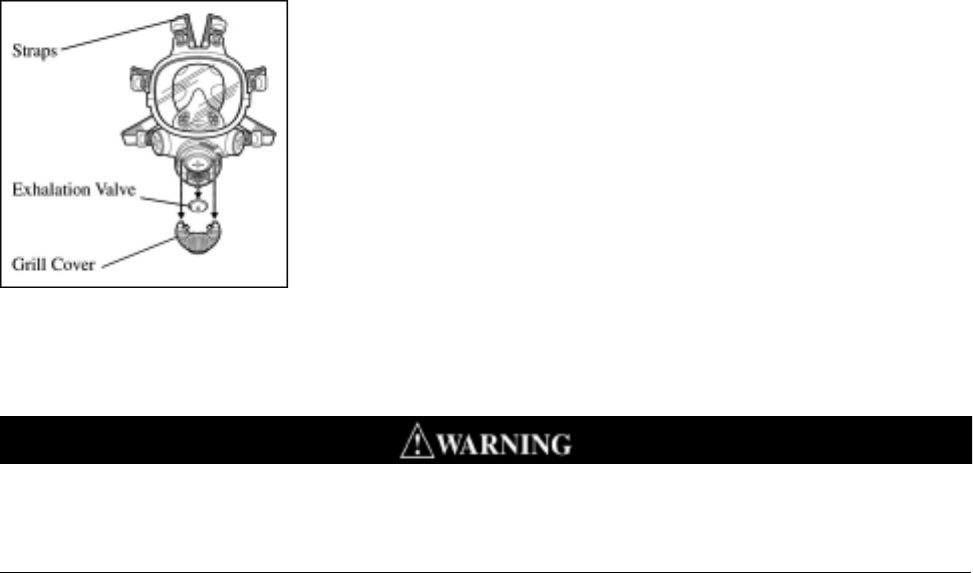
17
1. Check the faceseal for cracks, tears and dirt. Examine the inhalation valves for signs of distortion,
cracking or tearing.
2. Check that the headstraps are intact and have good elasticity.
3. Examine all plastic parts and gaskets for signs of cracking or fatiguing and replace if necessary.
4. Remove the exhalation valve cover and examine the exhalation valve and seat for signs of dirt,
distortion, cracks or tears.
5. Replace the valve if necessary. Secure the valve cover prior to use. (Fig. 18) Examine the lens for
signs of cracking or other damage. Replace if necessary.
Fig. 18
Cleaning and Storage
Cleaning is recommended after each use.
Do not clean respirator with solvents. Cleaning with solvents may degrade some respirator components
and reduce respirator effectiveness. Inspect all respirator components before each use to ensure proper
operating condition. Failure to do so may result in sickness or death.
1. Remove cartridges, filters and/or breathing tubes. The center adapter, lens and faceseal can also be
removed if necessary.
2. Clean facepiece (excluding filters and cartridges), by immersing in warm cleaning solution, water
temperature not to exceed 120° F (49° C), and scrub with soft brush until clean. Add neutral detergent
if necessary. Do not use cleaners containing lanolin or other oils.
3. Disinfect facepiece by soaking in a solution of quaternary ammonia disinfectant or sodium
hypochloride (1 oz [30 ML] household bleach in 2 gallons [7.5 L] of water), or other disinfectant.
4. Rinse in fresh, warm water and air dry in noncontaminated atmosphere.
5. Respirator components should be inspected prior to each use. A respirator with any damaged or
deteriorated components should be repaired or discarded before use.
6. The cleaned respirator should be stored away from contaminated areas when not in use.
